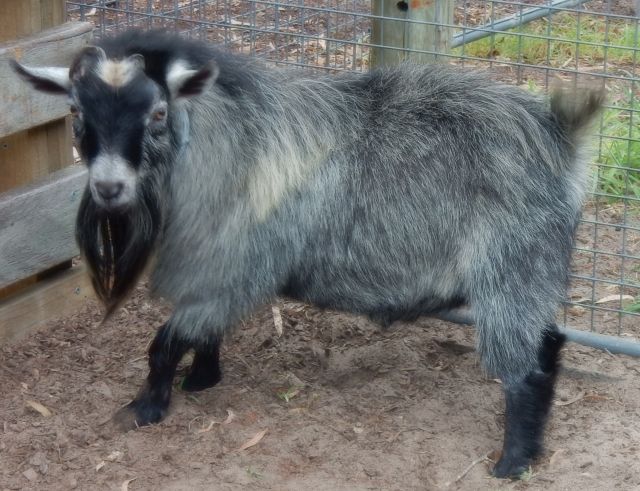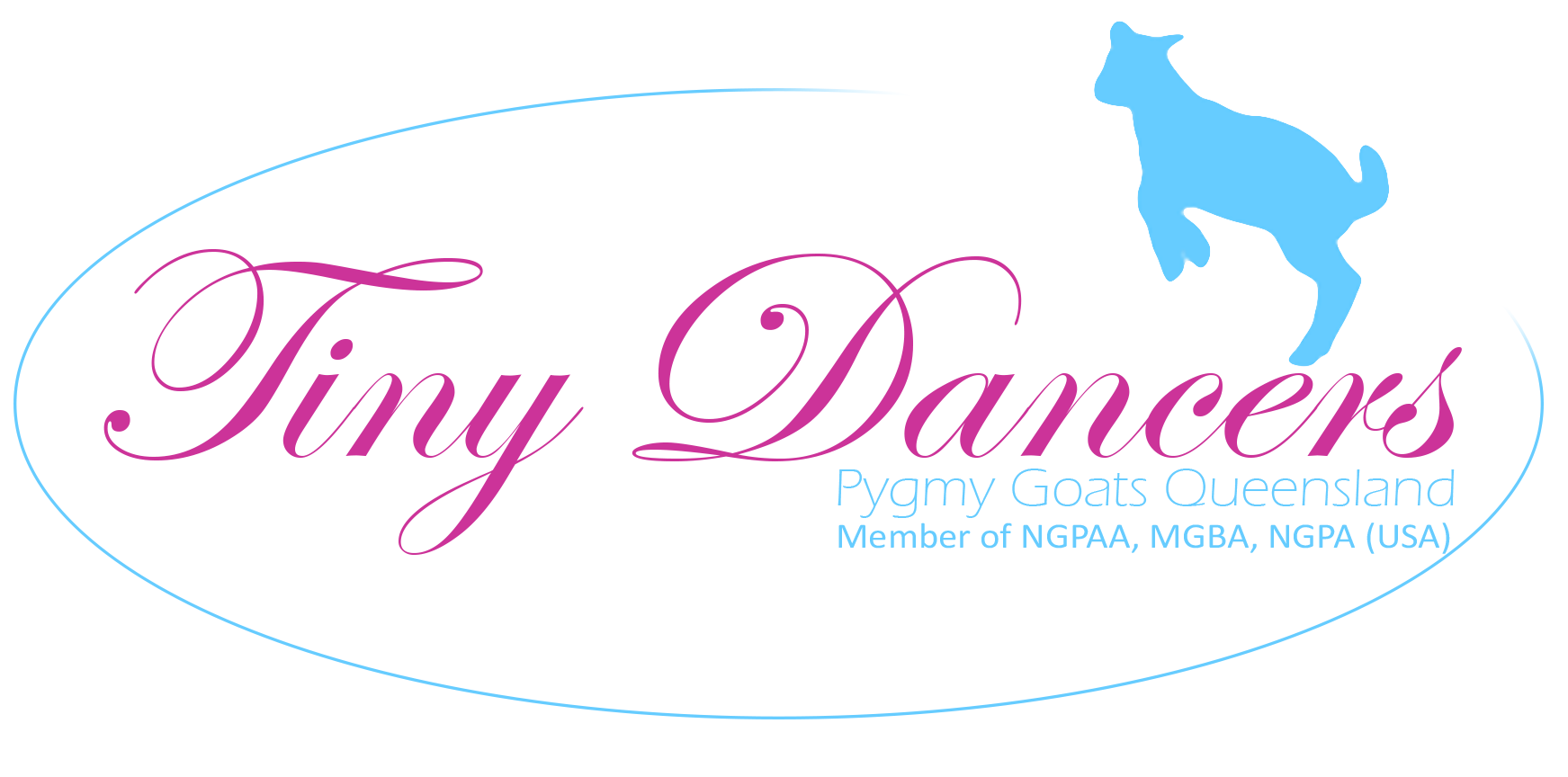
- What am I breeding for?
- What do I want to improve in my herd?
- Do I need to work on correcting anything?
- Feet, Legs, Topline, Udders, Overall confirmation, etc.
- Do your research and ask to see his pedigree.
When choosing a buck to breed with your does, look for one that has desirable characteristics you want in your herd. The characteristic of the buck is more crucial than that of your does because your herd will be produced from many does, but many of those does will usually be bred by a single buck, therefore, it’s critical to make sure that buck has the kind of strong, desirable conformation that you want to see being developed in your entire goat herd.
Another rule related to this is, always breed to make your herd better. In other words, use a buck that has more desirable characteristics and conformation than the goats you already have.
When using a buck to breed your does, always make sure the buck is healthy and exhibits excellent conformation and temperament. Check qualities such as teats, scrotum attachments. Finally, don’t ignore coloring, Attractive, and desirable coloring is sought after by many buyers
No matter what size your herd is, it is important to get the best buck you can, that fits your breeding program and personal goals. Your buck is worth around 80% of your herd. He is producing your next generation of breeders.
Hopefully, you now have some valuable knowledge that will help you begin to learn how to confidently pick goats for your own breeding program.
Information gleaned from AABMGS
Breed characteristics
Coat: The full coat of straight, medium long hair varies in density with seasons and climates. On does, beards may be non-existent or sparse. On adult bucks, abundant hair growth is desirable; the beard to be full, long and flowing, the copious mane draping, cape-like, across the shoulders.
Colour and breed-specific markings: Any colour and colour combination is acceptable in Australia – Pygmies bred by upgrading from non-Pygmy does potentially carry a diverse range of colours.
Full-blood stock imported as embryo from the US conform to the preferred colours listed below.
The preferred colours recognised in the US are:
- Solid black
- Black
- Agouti
- Caramel with black markings
- Caramel with brown markings
Body structure
- Head: Short to medium long; profile somewhat dished.
- Muzzle rounded, not snippy, nose short, wide and flat.
- Chin and underjaw full; bite even, neither overshot nor undershot; jaws broad, strong and well-muscled.
- Forehead broad, flat or concave.
- Eyes set well apart, bright, prominent but not protruding. Any colour is acceptable.
- Ears medium sized, firm, erect, alertly mobile.
- Genetically horned or polled; disbudding and dehorning permissible.
- Neck: Well muscled; short, round, more full-throated than dairy breeds; more refined in does than in bucks.
- Withers: Nearly level with, but not lower than the spine.
- Shoulders: Muscular, well angulated and laid-on, tightly attached; point of shoulder placed posterior to the sternum.
- Ribs: Wide apart, well sprung; rib bone long, wide and flat.
- Back: Strong, laterally straight, level along chine and loin.
- Chine: Broad, level from withers to loin.
- Loin: Broad, strong, nearly level, rising slightly toward the iliac crest.
- Rump: Medium long, medium wide, neither level nor steep.
- Hips: Wide, nearly level with back.
- Thurls: High, wide apart.
- Pin bones: Wide apart, lower than hips, pronounced.
- Tail: Set high, wide at the base, symmetrical, carried high.
- Flanks: Deep, set low on barrel.
- Thighs: Long and wide, well muscled, incurving towards udder.
- Legs: Short, heavy bone, well muscled, wide apart.
- Forelegs: Straight and squarely set, with elbows close to ribs and cannon bone short.
- Hind legs: When viewed from the rear: hind legs straight, widely set to accommodate large barrel; stifle held tightly to the body. When viewed from the side: femur and tibia proportionately longer than in dairy breeds and angulated toward a more pronounced stifle joint, thus compensating for the short, flat, and flinty rear cannon bone.
- Hocks: Cleanly moulded and sharply angled.
- Pasterns: Short, strong and resilient.
- Feet: Well-shaped, proportioned to size of animal, deep heel and level sole with hoofs symmetrical.
- Body capacity: Large in proportion to size of animal, providing ample digestive and reproductive capacity as well as strength, vigour, and stamina.
- Barrel: Broad, deep, increasing in width and depth toward flank giving an impression of perpetual pregnancy. Symmetrical, well supported by firm abdominal wall and well-sprung ribs. The disproportionately large circumference of the paunch is greater in does than in bucks.
- Heart girth: Large due to long, well-sprung fore-ribs.
- Chest: Well muscled brisket, wide floor, full at point of elbow.
Mammary system (Does)
Udder: Firm, rounded, small to medium sized, halves evenly balanced and symmetrical.
Rear attachment: High, full, tightly attached and blending smoothly.
Front attachment: Well forward, tightly attached without pocket, and blending smoothly into body.
Texture: Silky smooth, elastic, pliable but firm, free of lumps or scar tissue.
Teats: Two, cylindrical, of uniform length and size, sufficient for milking with two fingers and thumb. Symmetrically placed, free of obstructions, deformities, or multiple orifices.
Reproductive system (Bucks)
Testicles: Two, fully descended, of fairly equal size, healthy and firm.
Teats: Two, cylindrical, of uniform length and size, symmetrically placed, free of deformities or multiple orifices.
Height and cannon length (Purebred measurements):
Under 6 months
Height: Does: 47cm Bucks: 47.5cm
Cannon: Does: 10cm Bucks: 11cm
6 to 12 months
Height: Does: 52cm Bucks: 52.5cm
Cannon: Does: 11cm Bucks: 11.5cm
12 months and over
Height: Does: 57cm Bucks: 60cm
Cannon: Does: 11.5cm Bucks: 12cm
The National Pygmy Goat Association (NPGA) Breed Standard.
Http://www.npga-pygmy.com/resources/conformation/npgabreedstandard.pdf
Registration
Animals with 12.5% or more Pygmy genetics are eligible to be registered and shown as Pygmies – their percentage of Pygmy genetics (based on pedigree information provided to the Registrar) will be recorded on their Registration certificate.
Animals with less than 12.5% Pygmy genetics (based on pedigree information) will still have their percentage of Pygmy genetics recorded on the Registration certificate.
The AABMGS does not require DNA testing to confirm parentage of Pygmies, but if breeders choose to have parentage DNA verified and the relevant paperwork is provided to the AABMGS Registrar, this information will be recorded on the Registration certificate.
Pygmy grades AABMGS
Grade F: 12.5% or more, but less than 25% Pygmy genetics
Grade E: 25% or more, but less than 50% Pygmy genetics
Grade D: 50% or more, but less than 60% Pygmy genetics
Grade C: 60% or more, but less than 70% Pygmy genetics
Grade B: 70% or more, but less than 80% Pygmy genetics
Grade A: 80% or more, but less than 90% Pygmy genetics
Purebred: 90% or more Pygmy genetics.
Full Blood: 100% imported US Pygmy genetics (animals descended exclusively from imported lines).
! Always remember a bad buck will negatively impact on your Entire herd’s genetics for many generations to come !
Whether to Wether
These are just a few things to consider and can be used as a basis for developing your own checklist.
Does he have a split scrotum or extras teats? If yes, wether him no matter how beautiful you think he is.
Does his scrotum have a good wide attachment? If no, wether. If yes, go to next question.
Does he have strong straight legs and evenly placed feet? If no, wether. If yes, go to next question.
Do his legs come down horizontally from his shoulders, giving him a good wide chest? If no, wether. If yes, go to next question.
Does his Dam have a well-structured and attached udder with well-defined teats, for easy milking? If no, wether. If yes, go to next question.
Do the Does in his line have well-structured and attached udders with well-defined teats, for easy milking? If no, wether. If yes, go to next question.
Does he carry himself with pride and ooze confidence? If no, wether. If yes, go to next question.
Are all of the goats in his line free of nasty habits and traits, besides normal buck behavior? If no, wether. If yes, go to next question.
Is he what you would breed with yourself? If no, wether. If yes, go to next question.
If he is extra to your own needs do you have a buyer for him? If no, wether.
